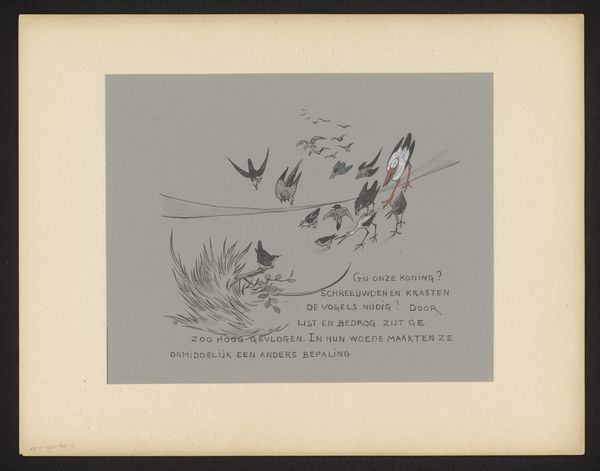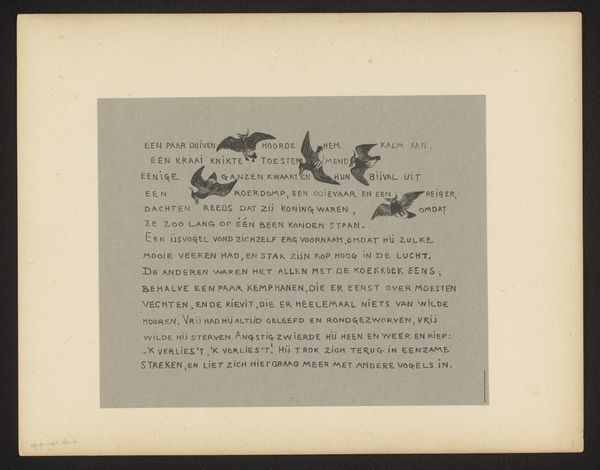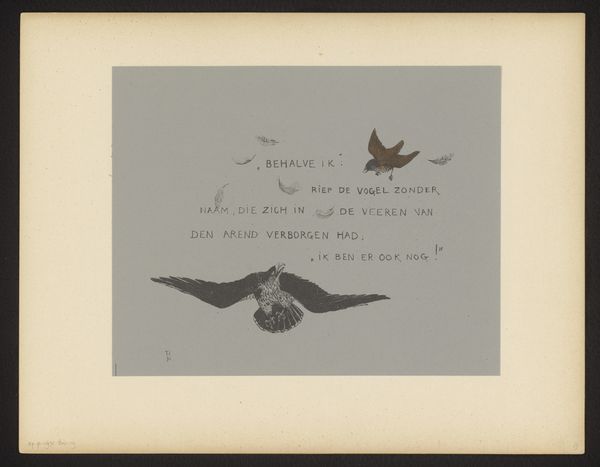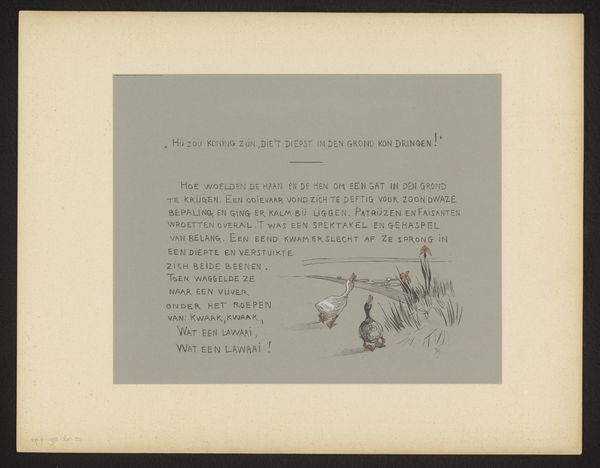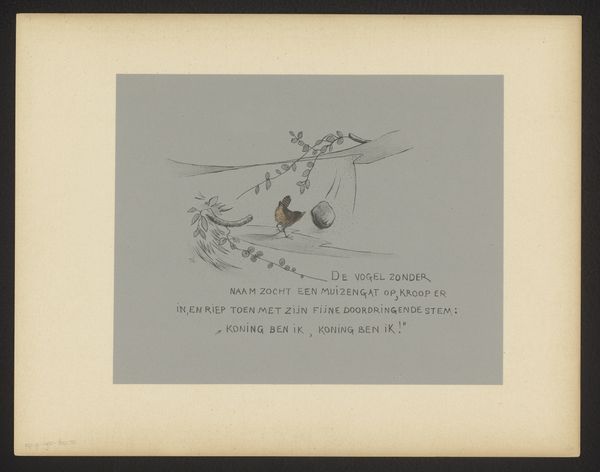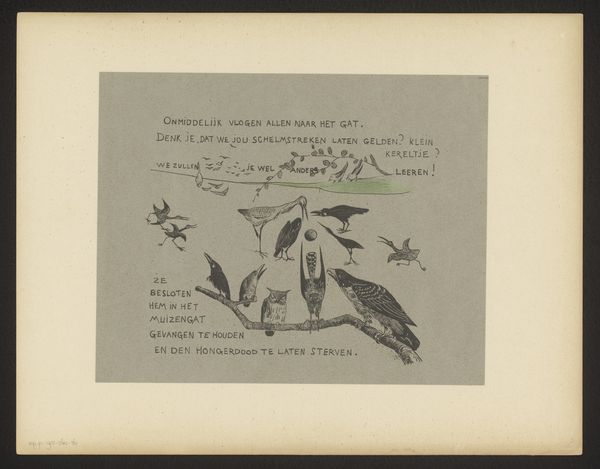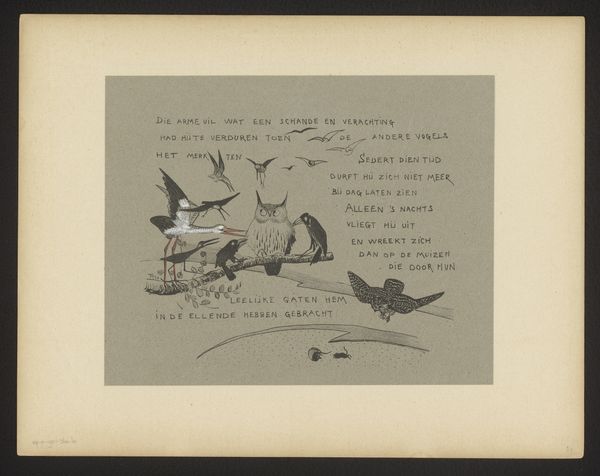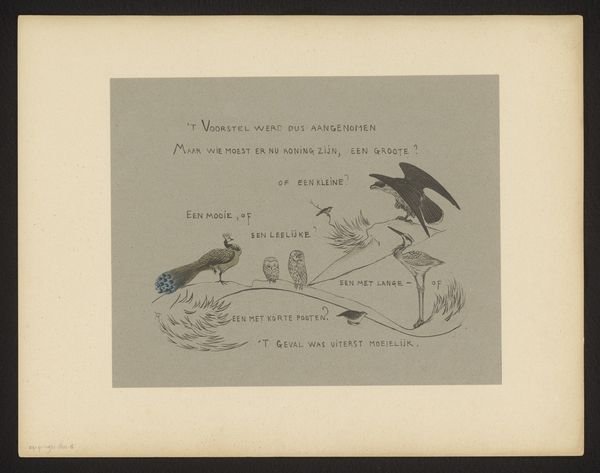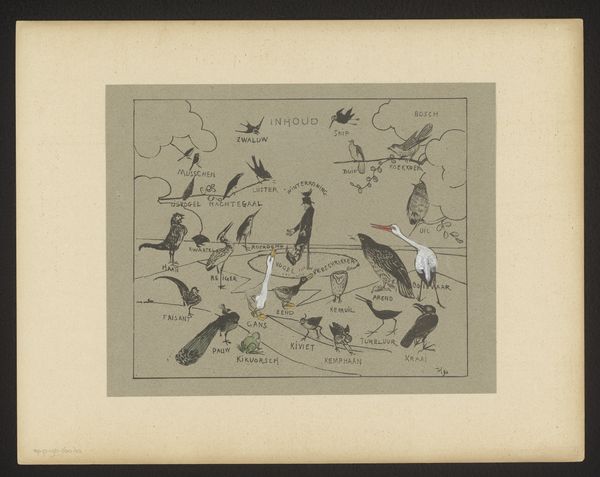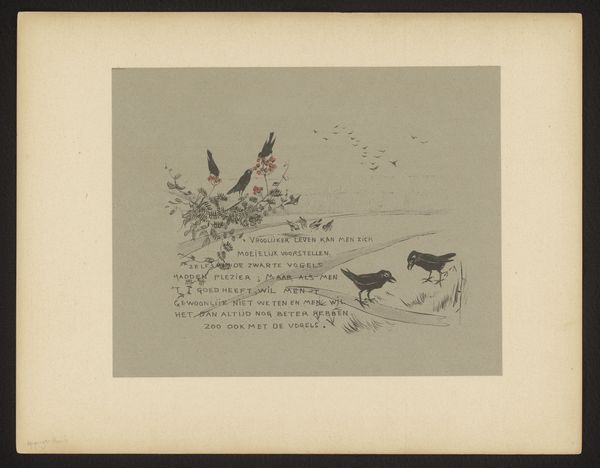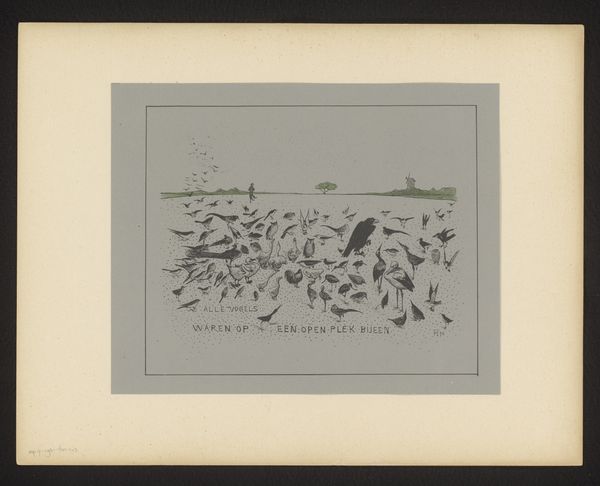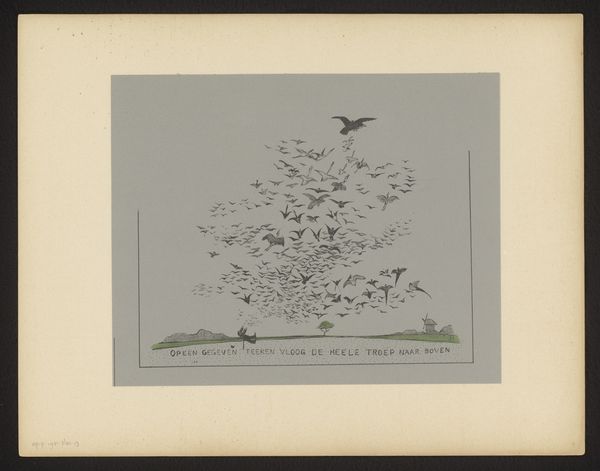
Vanaf de grond kijkt een groep vogels op naar een biddende arend 1892
0:00
0:00
drawing, print, paper, ink
#
drawing
# print
#
landscape
#
paper
#
ink
#
symbolism
Dimensions: height 224 mm, width 281 mm, height 319 mm, width 408 mm
Copyright: Rijks Museum: Open Domain
Editor: This is "Vanaf de grond kijkt een groep vogels op naar een biddende arend," which translates to "From the ground, a group of birds look up to a praying eagle," by Theo van Hoytema, created in 1892 using ink and print on paper. There’s a strong sense of…irony, I think? It's whimsical, but feels pointed, almost like a fable. How do you interpret this work? Curator: It is interesting you see irony. Van Hoytema was known for his depictions of birds. Considering this was made in 1892, amidst growing social and political unrest, particularly anxieties about class and authority, do you see any potential metaphors emerging, reflecting the power dynamics of the time? Who does the eagle represent and how does its posture – and the bird's address – feed into this depiction? Editor: So, maybe the eagle represents an elevated figure, like the monarchy or aristocracy, and the smaller birds represent the common people? Is it suggesting a forced, almost sarcastic, admiration? Curator: Precisely. Think about the art institutions of the late 19th century too. They were heavily influenced by the upper classes. Could this image be a subtle critique of the art world, where certain figures and styles are elevated above others due to social standing? The subservient text beneath underscores a forced admiration, hinting at societal pressures and the performative aspects of respect within hierarchical systems. Editor: I never thought about how societal hierarchies influenced art beyond just subject matter, but the very structures presenting art themselves! Thanks. I am starting to see van Hoytema’s pointed intention much more clearly now. Curator: And how the audience can “hail to the king.”
Comments
No comments
Be the first to comment and join the conversation on the ultimate creative platform.

